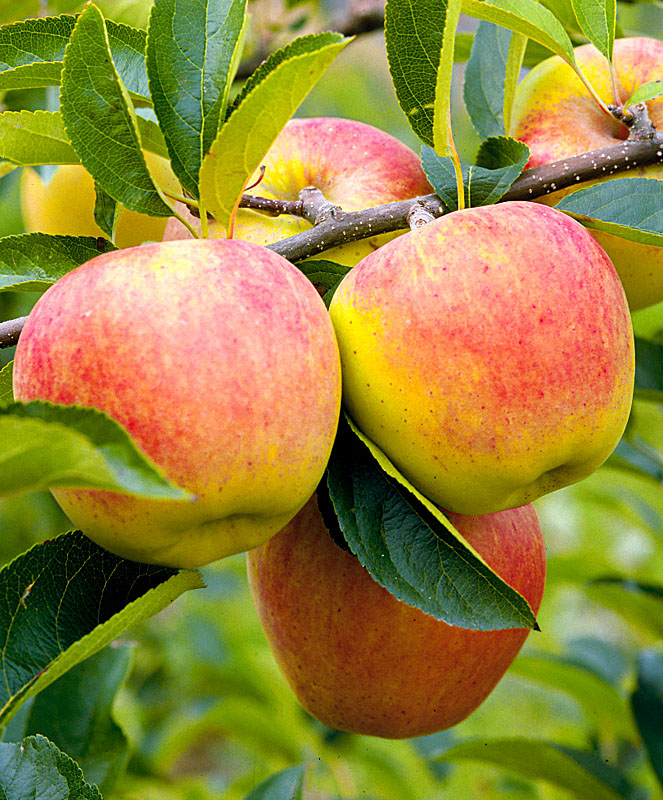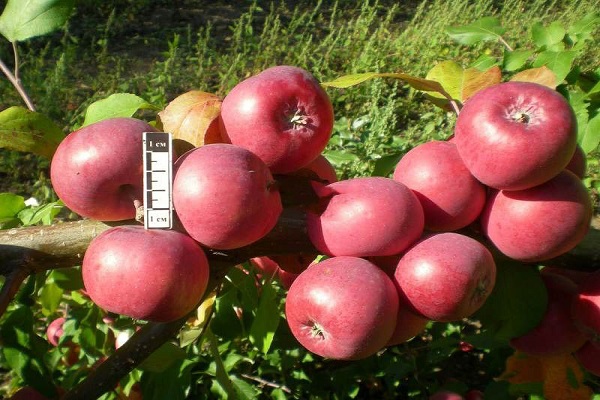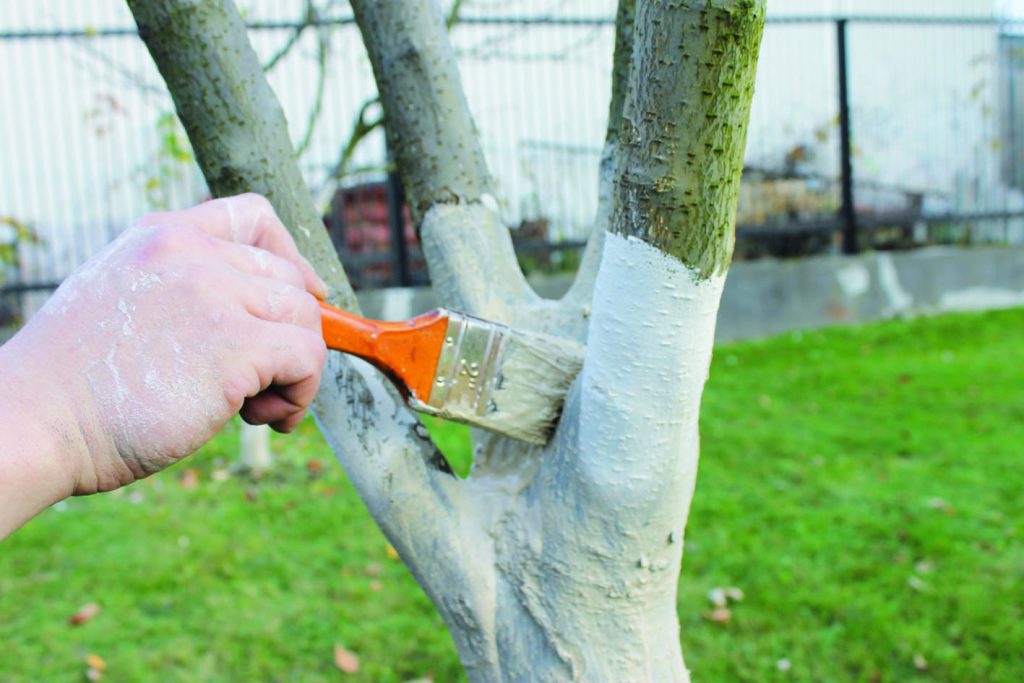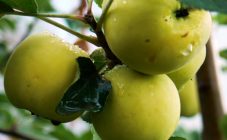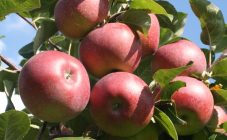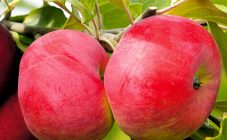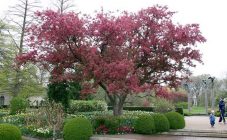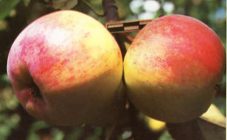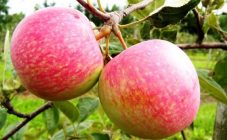Content:
For a long time, in the regions of Siberia and the Urals, not a single apple species has taken root, from which one could get quite tasty and large apples. The leading positions were occupied by dwarf apple varieties for Siberia, such as Palmetta, Siberian souvenir and Nezhenka. This situation persisted until, in the last century, a new variety, called Bayan's apple tree, appeared experimentally.
Brief history and subspecies
It was obtained back in 1984 and was created as a frost-resistant crop, designed specifically for breeding in remote areas of the Northern Urals and Siberia (Altai Territory). For this, two well-known varieties were used: Bellefleur - kitaika and Altai purple. Upon completion of serious testing of the new hybrid (studies of the peculiarities of its vegetation on various soils), it was confirmed that the issue of obtaining a frost-resistant apple tree was finally resolved.
In addition to the main variety, another interesting hybrid of it was bred under the name Dwarf, or Semi-crop, bred on seed stock. This small plant can be imagined as a strong bush, a little over 2 meters high.
After the appearance of the Semi-culture apple tree for Siberia, the varieties of which stood out noticeably among other samples, the new species spread over a short time to the northern regions of Russia, including the Altai Territory.
With the advent of this hybrid, the often asked question of which apple tree to plant in Siberia was finally resolved.
Description and characteristics
For a more complete understanding of the characteristics of a plant, you will need to familiarize yourself with its characteristics, given below:
- A relatively undersized apple tree for western Siberia, the best varieties of which will be considered in this review, belongs to late-ripening crops (their fruits ripen in late autumn).
- This fruit plant is also characterized by enviable frost resistance and high immunity to garden diseases.
- The apple is quite large in size (it reaches 110-150 grams in weight) and has a rounded shape.
- Its skin is rather smooth and thick with a greenish-yellow tinge, and at the stage of final ripening, a maroon bloom forms over the entire surface of the fruit.
The Bayan apple tree itself is not very tall, which by the age of 12 does not exceed 3.5-4 meters. The crown of the trunk is rather sparse, slightly elongated in shape; at the same time, its diameter reaches 3-4 meters. The branches, on which the fruits subsequently ripen, are located very compactly and depart from it at an acute angle (they say that the crown has a pyramidal profile).
The annual growth in branching horizontally averages about 5-6 cm, and vertically - 8-10 cm.In terms of its yield, this variety is one of the best for these conditions, however, due to the frosty climate, fruiting occurs at a certain frequency. At a maximum rate of 14 tons per hectare, in other not very fertile years, no more than 4 tons can be collected from the same area.
The fruits of the Bayan apple tree, with a description of which can be found in this section, are quite attractive in appearance, have a very juicy and tasty cream-colored pulp and a sweet aftertaste. According to an expert assessment, their quality is estimated at 4.7 points.
When growing, this hybrid resembles peas creeping on the ground, only of a very large size. To describe the winter hardiness of this culture, it is enough to note that at temperatures up to 35 degrees, the tree practically does not freeze. However, it is resistant to most of the known woody diseases, with the exception of a number of ailments such as cytosporosis or black cancer, for example, which can bring many troubles.
Ripening and fruiting
The culture in question belongs to the category of early-growing plants, so that the first crop can be harvested within 3-4 years after planting. The final ripening of the Bayan apple tree is observed somewhere in early September. It is usually identified by the appearance of a characteristic purple hue on the apple skin.
If it is necessary to store it for a long time after harvesting, it should be remembered that the fruits retain their condition for only 4 months, after which they quickly deteriorate. In regions with prolonged (protracted) seasonal rains, the skins of the Semi-culture apples begin to crack strongly. So the terms of their safe storage in a number of northern regions can be significantly reduced.
Features of agricultural technology
Landing
When considering the timing of planting apple seedlings, the following should be noted:
- They can be planted both in early spring, while the buds of the trees have not yet blossomed, and in late autumn, after the leaves have fallen off.
- Most northerner gardeners (especially in Siberia) advise planting in the spring.
- In this case, the roots of young seedlings during the summer season will have time to get stronger and reliably take root in the soil, which will ensure their survival in the winter.
- Before planting, the soil for each individual apple tree must be fertilized.
Before, a pit breaks out in it, about 60 cm deep, and 90 cm wide, where 2 full buckets of humus and 60 grams of potassium sulfate (and the same amount of superphosphate) are added. Then all this mixture is thoroughly mixed in the hole, forming a small mound on its surface.
After that, the varietal seedling itself is installed on the elevation, carefully spreading its roots in different directions, after which the hole is covered with the ground that was previously thrown back. Upon completion of excavation, at least 3 ten-liter buckets of water are poured into it.
When determining the required distance between planting pits, one should proceed from the fact that the grown tree has a spreading crown, for the normal development of which at least 4-5 meters is required. For the same reason, at least 5 meters are left between the rows of apple trees (if they have to be planted with a whole plantation).
If these conditions are met, the tree will receive a sufficient amount of light energy during development and will not be shaded by other samples.
Care (watering, feeding, circumcision)
Properly organized care of young seedlings has a great influence on the favorable development and growth of the apple tree. An obligatory set of works for the care of planted plants includes the following operations:
- Watering the soil (especially plentiful in the dry season).
- Weeding and periodic loosening of the soil in the area of the trunk circle.
- Obligatory whitewashing (both in autumn and spring).
- Preventive spraying with protective chemicals to ensure successful cultivation.
- Top dressing with various types of fertilizers (mainly nitrogenous).
In order to avoid a lack of iron in the wood structure, the apple tree trunk is additionally treated with a solution of ferrous sulfate.
Despite the previously noted frost resistance, the Siberian variety Bayan may suffer in very severe frosts (they threaten its root system to a greater extent). To prevent this, experts advise in autumn to sprinkle the near-trunk circle with a layer of peat about ten centimeters thick, on top of which the fallen leaves are additionally raked up.
In order to prevent possible ultraviolet burns, the trunk of a young tree should be whitened at least 2 times a year (in spring and autumn). In addition, to protect against strong winds, it is recommended to tie it to a peg driven in next to it.
Correctly organized feeding of the apple tree with the use of potash and phosphorus fertilizers guarantees an output to the required yield level. And timely pruning of an overgrown crown prevents the spread of fungal diseases.
Despite the fact that this variety is self-fertile, experts advise to grow an apple tree together with other winter species, counting on additional (cross) pollination.
Advantages and disadvantages
The advantages of large-fruited apple trees for the regions of western Siberia include:
- Excellent frost resistance and good fruiting.
- Relatively good yield
- Immunity to such a common disease as scab.
In the final part of the article, we note that if you have any difficulties with which variety of apple trees it is better to plant in a country house in Siberia, you should simply choose the hybrid considered in this review. In this case, it is possible to save money on experiments with other plant species, which usually do not take root in Siberian frosts.
